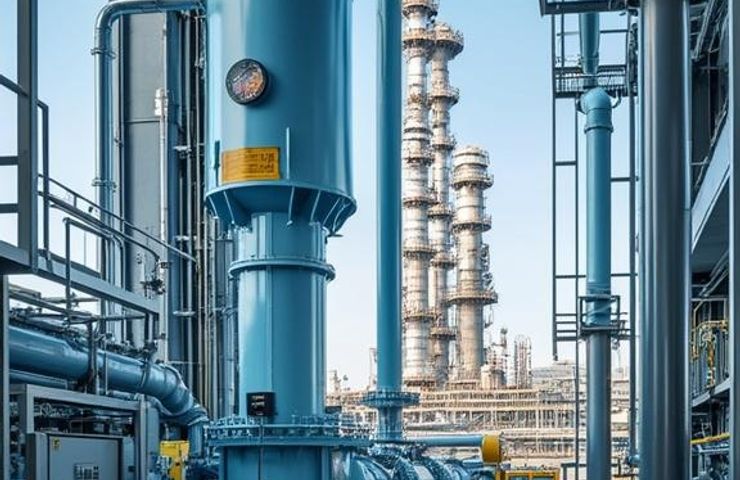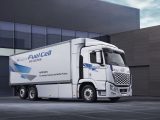
Multi-Megawatt High-Temperature Electrolyzer Project at Neste’s Rotterdam Refinery
October 9, 2025It all kicked off on October 6, 2025, when the MultiPLHY consortium—featuring Neste, Sunfire, CEA, ENGIE and SMS group—flipped the switch on the world’s largest multi-megawatt high-temperature electrolyzer at Neste’s renewable products refinery in Rotterdam. The debut of this roughly 3.5 MW Solid Oxide Electrolyzer Cell (SOEC) system signals a landmark moment in industrial decarbonization, as it churns out ≥670 Nm³/h of green hydrogen—enough to cover about 40% of the refinery’s hydrogen needs during operation.
Across Europe, heavy industries are under mounting pressure to slash emissions in line with the EU’s climate targets. Traditionally, refineries have relied on steam methane reforming (SMR) for hydrogen—a process responsible for significant CO₂ output. By contrast, renewable hydrogen via large-scale electrolysis promises a zero-emission alternative when paired with wind or solar power. Placing this electrolyzer in Rotterdam—Europe’s busiest port and a testing ground for energy transition projects—puts MultiPLHY at the cutting edge of sustainable energy innovation.
Inside the High-Temperature Electrolyzer
The heart of MultiPLHY is Sunfire’s multi-megawatt HTE stack. Operating above 600 °C, the SOEC leverages heat—some supplied by refinery processes—to boost electrical efficiency to about 85% (lower heating value), roughly 20% higher than conventional alkaline or PEM electrolyzers. Water feedstock is pretreated by SMS group’s hydrogen processing unit, then continuously split into hydrogen and oxygen. The high-purity hydrogen is compressed and piped directly into the refinery network, while oxygen is vented or valorized.
Backed by the EU, Powered by Collaboration
Funded under the European Union’s Horizon framework (Project ID 875123), MultiPLHY combines research and industry muscle. CEA oversees scientific validation and knowledge transfer, ensuring that data from the 16,000-hour demonstration feed back into research labs. ENGIE drives the techno-economic assessment—modeling cost curves, grid impacts and scalability. Sunfire and SMS group deliver and integrate the core hardware, while Neste operates the system on-site.
Proving Durability and Performance
Beyond start-up, the project includes a benchmark study of 10 kW stacks to track degradation patterns, thermal cycling effects and maintenance cycles at lab scale. At 3.5 MW, the full system targets ≥98% availability, with inline monitoring and refined maintenance protocols. These lessons on seal integrity and long-term robustness are crucial for moving high-temperature electrolysis from demo to commercial reality.
Why Rotterdam Matters
Rotterdam’s deepwater port, dense pipeline grid and access to offshore wind farms make it an ideal proving ground. Neste’s refinery ties directly into existing steam, power and utility loops, allowing seamless integration of the electrolyzer. By tapping onsite heat and renewables, the project maximizes efficiency and uncovers real-world operational insights that can be replicated across Europe’s industrial clusters.
Navigating the Hurdles
Despite the promise, challenges remain. High-temperature electrolyzers carry higher upfront costs than established low-temperature alternatives, and they demand durable materials to withstand extreme operating conditions. Securing large volumes of competitively priced renewable electricity is key to driving down the levelized cost of hydrogen. Grid operators must also balance the added load, managing variable renewables without compromising stability. MultiPLHY’s techno-economic analysis under ENGIE will illuminate the pathways to cost-competitive green hydrogen.
Economic Viability and Market Dynamics
Investors are keen to see clear cost targets. Early assessments by ENGIE indicate that scaling SOEC stack manufacturing and locking in long-term renewable power contracts are pivotal levers. Bulk orders could cut stack costs by up to 40% over five years, while power purchase agreements tied to offshore wind would hedge against price volatility. This economic blueprint is exactly what the market needs to accelerate adoption.
Policymakers across Europe are crafting frameworks to reward low-carbon hydrogen—from carbon pricing reforms to quotas for renewable hydrogen in refining and ammonia production. Several national programs are lining up “hydrogen valleys,” where production, storage and end-use coalesce. Insights from Rotterdam are expected to inform these clusters, especially on integrating SOEC-based hydrogen into existing chemical loops and fuel-blending networks.
Data from both the multi-megawatt system and the 10 kW benchmark tests will also feed into international standardization efforts, delivering clear guidelines on performance metrics, maintenance schedules and safety protocols. That transparency builds trust—essential when deploying emerging technologies at scale.
A Blueprint for Industrial Decarbonization
The triumph in Rotterdam is more than a technical milestone; it demonstrates a scalable model for decarbonizing energy-intensive industries. With real-world performance data in hand, OEMs can refine next-generation electrolyzers for greater capacity and lower cost. Meanwhile, policymakers and investors gain confidence that green hydrogen can plug into existing assets without major process upheavals. As we race toward net-zero, projects like MultiPLHY are keystones in the emerging hydrogen infrastructure.
Looking ahead, the true test will be stacking multiple electrolyzers, pairing them with flexible renewable power and rolling out hydrogen-ready infrastructure at scale. But there’s no denying the significance of this moment in Rotterdam: at a time when every tonne of CO₂ counts, we can see that industrial-scale hydrogen production via high-temperature electrolysis isn’t just a lab curiosity—it’s a ready-now solution for decarbonizing heavy industry.



 With over 15 years of reporting hydrogen news, we are your premier source for the latest updates and insights in hydrogen and renewable energy.
With over 15 years of reporting hydrogen news, we are your premier source for the latest updates and insights in hydrogen and renewable energy.